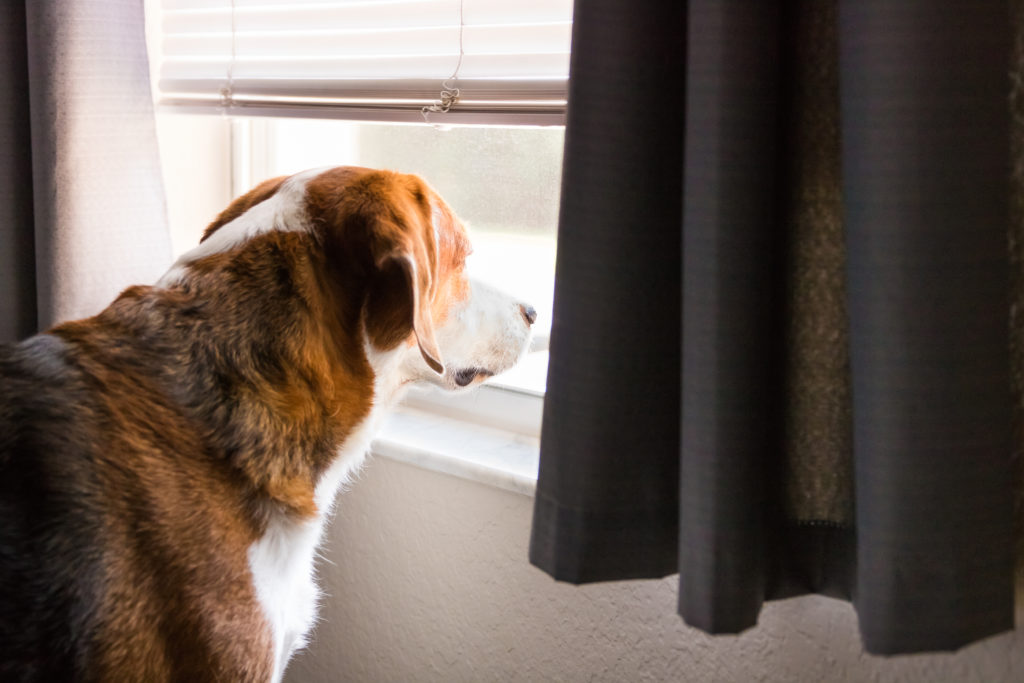
The COVID-19 pandemic sparked many changes in Americans’ lives: new work and school routines, new hobbies and, for many, new pets. According to the American Pet Products Association, more than 11 million U.S. households got a new pet during the pandemic. And with people spending so much time at home, those pets got unprecedented amounts
of attention.
Now, as the pandemic ends and Americans return to offices and schools, separation anxiety — extreme distress and panic that strikes when an owner leaves — could be a real problem for some of these pets.
Signs of separation anxiety in pets include:
- Excessive vocalizations, such as howling, barking or meowing
- Peeing or pooping in the house or outside the litter box
- Chewing furniture, shoes and other items
- Scratching windows and doors
- Pacing, panting or excessive grooming
These behaviors often begin when the owner is getting ready to leave. The trick, says Gaithersburg-based animal behaviorist Mary Huntsberry, is to foster your pet’s independence before your new routine starts.
“The more dependent we make our pets on us, the harder it will be for them to be away from us,” Huntsberry says. “So manipulate your pet’s natural tendencies to want to be alone. Give them a toy or a frozen Kong and confine them with it in a crate or another room for short periods of time, then start leaving the house for longer and longer stretches.”
Here are some other things you can do to prevent and ease separation anxiety in your pet:
Give your pet plenty of exercise
Pent-up energy will fuel your pet’s anxiety, but exercise will increase her endorphins, making her more relaxed and less stressed when you leave.
Keep departures and returns drama-free
“Pets feed off of people’s body language,” says Huntsberry. “If you’re acting weird or anxious, it will stress them out.” So keep your departures and returns short and simple by smiling and saying, “I’ll be back!” when you leave and, “I’m home!” when you return.
Make your absences as comfortable as possible
Be sure your pet has easy access to food and water, toys and preferred sleeping and hangout spots. Consider keeping a TV or radio on. You can also install a camera system to check on and talk to your pet remotely.
Huntsberry notes that it’s important not to diagnose your pet with separation anxiety on your own. “An owner leaving can be interesting and stimulating in itself,” she says. “Just because your dog or cat is following you, it doesn’t mean they’re anxious.”
If you suspect your pet has separation anxiety, talk to your veterinarian or an animal behaviorist. They may recommend anti-anxiety medication, natural supplements or therapy to help your pet become calmer, happier and more independent.
This story first appeared in our August/September 2021 issue.




